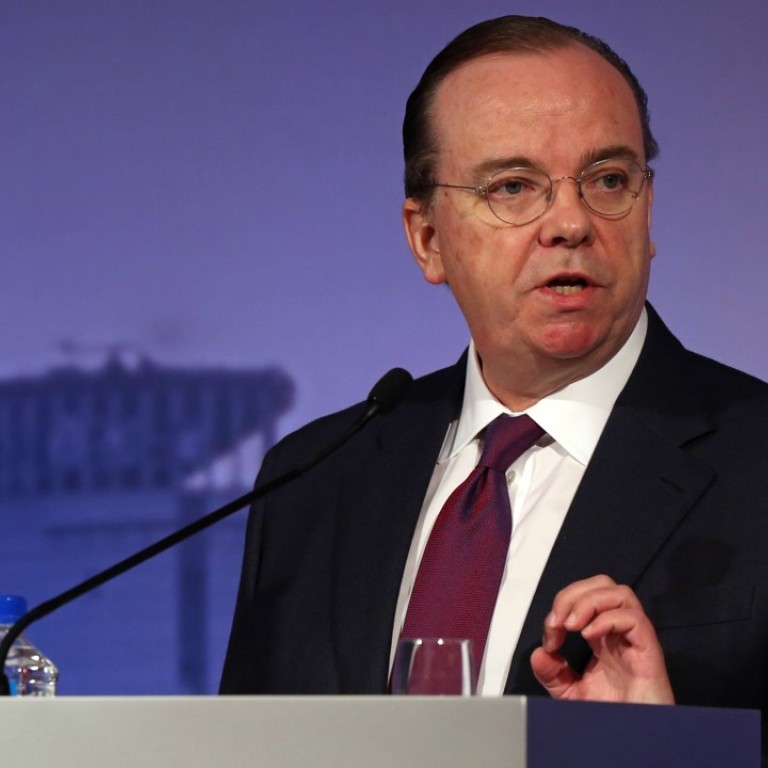
If Stuart Gulliver found his tenure at HSBC arduous, it’s going to be no different for John Flint
Since taking over in 2011 Gulliver reorganised and refocused HSBC, but his actions have set limits and constraints for new CEO Flint as they are determined by the new economics of the global banking market
Stuart Gulliver once told me that his legal background made him an ideal trader in capital markets because “it helped you to think quickly on your feet”. Tough decision-making and the pragmatic resolution of unusual challenges were regularly demanded of him during his tenure as the CEO of HSBC.
Gulliver this week handed over control to John Flint, the bank’s former global head of retail banking. Mark Tucker, former CEO at Asian insurer AIA Group, assumed the role as HSBC chairman from Douglas Flint, no relation to John Flint, last October.
Gulliver’s main objectives since becoming CEO in 2011 confronted him rather than the other way around. Post-global financial crisis regulations created challenging expectations and conflicting goals alongside a reorganisation of assets and the bank.
The record US$1.9 billion fine and deferred prosecution agreement (DPA) in 2012 for Mexican money laundering had haunted HSBC’s reputation until they were released from the DPA earlier this year. For the first time, avoiding regulatory shutdown emerged as a strategic hazard. Since 2015, the bank had shed more than US$338 billion in risk weighted assets.

Hiring thousands of compliance officers and adding new systems while achieving profit, revenues, return on equity (ROE) and new Basel capital requirements – all while defending and providing for massive fines, has made bank leadership an uphill battle. Moving forward while fighting a simultaneous rearguard against regulators on multiple fronts was enervating yet necessary to become a new bank.
Effectively managing a refocused and leaner global bank with 232,000 employees remains a nearly impossible task for any CEO
Gulliver has reorganised and refocused HSBC, but his actions have set limits and constraints that the new CEO must inherit; many of them are determined by the new economics of the global banking market. Critics have characterised banking as an oligopoly, but unlike electricity and water, banks compete fiercely behind high regulatory and capital barriers to entry. And most of all, they are authors of the volatility that they can succumb to.
Banks must struggle between the ponderous models of “too big to fail” versus “too big to manage”. No rational bank CEO advocates shrinking a business, so they argue for the big bank benefits of diversified business and asset class risks across multiple countries. The two most formidable challenges to a bank CEO achieving a targeted 10 per cent ROE are: bringing an end to fines and stabilising the costs of new regulations. Bank leaders I have spoken to are still waiting for all their compliance investments to pay off and contribute to profits.
Effectively managing a refocused and leaner global bank with 232,000 employees remains a nearly impossible task for any CEO, especially, when independent malfeasance from frontline bankers and relationship managers can trigger huge fines and exhaustive investigations. Preventing and deterring it requires more technology and layers of management.
Like any trader confronted with adverse changes, difficult choices had to be made. Achieving anti-money-laundering compliance required closing down entire operations. And, statistically, it is easier for a bank to reject or shut down certain individual and commercial accounts that it deems as a compliance and know-your-client risk than to chance more fines as regulators resolutely level billion dollar fines without hesitation. Sacrificing the brand to save the brand became the spreadsheet choice.
The pivot to Pearl River Delta – taking domestic yuan risk in China is a positive move into the world’s last biggest banking market. Ninety per cent of HSBC’s US$17.1 billion was derived from Asia. But unpredictable, non-market trends will continue to affect the next CEO’s fortunes in a banking business undergoing uncertain historic changes.

